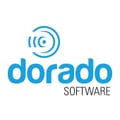This article describes preparation for remote or onsite training
CruzOC Training Prerequisites & Agenda
Training Options
You can have demo-based workshops with as little as a MS-teams or Zoom connection with Dorado Software. This is suitable for demonstrations, without hands-on exercises and classroom participation.
If, however, you want a regular training class with a trainer who is physically or remotely present, addressing a classroom full of participants who do exercises on their own machines, that is available. You can discuss the options available to use Dorado Software hosted VMs and lab devices Contact your sales representative, or send us e-mail for more information about how to order one.
Training Room Preparation (On-Site)
The following describes the typical requirements for hands-on workshops:
- A classroom, with reliable power, where the Workshop will occur.
- System Administration/IT support for lab setup and onsite support available for the duration of the Workshop.
- All relevant networking equipment must be accessible to the classroom, and any devices must be accessible by the NMS platform with proper credentials as appropriate. Please remove any access control restrictions from these devices.
- Best practice is to isolate the classroom network from any production network to avoid conflicts with production traffic.
Hands-on instruction requires a minimum of one server and one web-enabled computer for every group of students. Best practice is to have a separate VM on a server or for each student to have a laptop/desktop for use during the Workshop. If individual environments are not available, it is highly recommended to make each group sharing a resource to be no larger than four people; otherwise we have found that the training offers insufficient hands-on experience. Such equipment must meet specifications in Cruz NMS product documentation for the planned lab activities:
- Allocate and pre-configure computers with supported browsers for Lab Exercises. (Chrome and Firefox); both should have java 1.8 installed.
- User may use their own laptop to access an installed instance of Cruz assuming sufficient wired or wireless bandwidth.
- A Linux Cruz VM (ova) can be provided, but no Windows OS based VM can be supplied. The Cruz VM requires and ESX host.
- Provide access to device types appropriate for executing the lab exercises: ie OS10 switches or sonic or other devices .
- Provide management access over the network. This will vary by device SNMP & CLI (telnet/SSH) , REST protocols and credentials etc for each managed device must be allowed for discovery and provisioning devices and services.
- Projector and screen appropriate for a classroom setting so that students can follow the instructor.
- A whiteboard for illustrating and explaining training topics.
The trainer typically provides the following:
- The current Cruz installation package for training.
- Laptop for use by instructor during training.
- Training course material, including exercises, for attendees in electronic format.
Course Objectives
After completing this course, you will be able to do the following:
- Install Cruz NMS on a single server
- Discover your Network’s Device
- Understand the User Interface
- Monitor your Network’s Performance
- Understand Traffic Flow Analyzer
- Manage (backup / restore) Configuration Files
- View Alarms / Events, and Automate actions
- Customizing Topology View
- Understanding Containers
- Create and configure Reports
- Create and configure Network Visualizations
- Use Adaptive CLI Actions & Change Management/Proscan
- Troubleshoot the Cruz software
Typical Agenda (On-site or remote web based)
The agenda below will include hands-on exercise and will occur over a 3 day period. If a minimal Web based training in required over a shorter time period. The same agenda will be used in a Demo style format where a trainer will show the features and there will be no hands-on lab activities. These can be recorded.
The agenda is focus on "User" training and how to use the NMS features in Cruz. Administrative functions such as upgrades, RBAC, advanced tuning etc may not be covered in detail. A separate administrative training may be required, especially for High Availability or Distributed deployments. Admin training is generally customized to meet customer needs but can generally be accomplished in 1-2 days.
The following are the topics typically covered in the user training session. The duration of each training section can vary greatly depending on the intensity and depth of coverage, and are, of necessity, approximate since the level of expertise for audiences receiving such training can vary:
Day 1: Morning
Introductions
Access to the training environment
Installation/Startup/Using the Interface
Sites, Roles, Auth, Users
Discovery
Day 1: Afternoon
Resource Monitors
Day 2: Morning
File Management
Day 2: Afternoon
Alarms
Network View
Containers
Day 3: Morning
Reports
Actions/Adaptive CLI
Day 3: Afternoon
ProScan/Change Management
Troubleshooting
